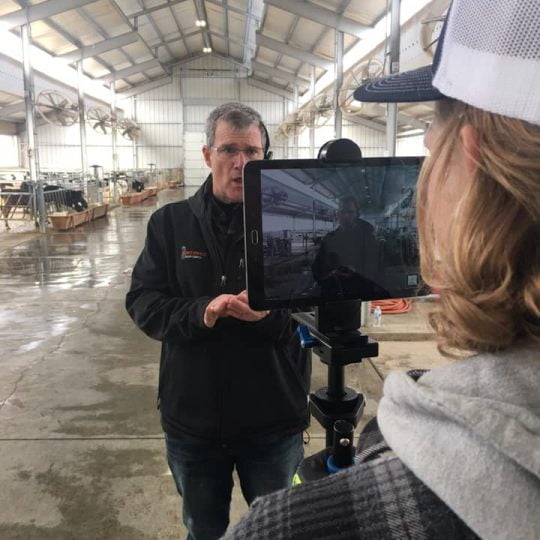
Rickreall Dairy is located just 15 minutes from Oregon’s state capitol, Salem. Our tour guide is the farm’s owner, Louie Kazemier. Rickreall Dairy is home to 3,500 Holstein cows. The cows are milked three times a day and produce an average of 10 gallons of milk per cow per day. Rickreall Dairy is inspected once a month, and works with 18 different government agencies. Milk is filtered and chilled before being tested to be sure it’s always free of antibiotics. You can find Rickreall Dairy’s milk in the Willamette Valley under the Darigold and Fred Meyer brands.
This lab introduces students to the effect temperature has on reducing and controlling the growth of bacteria. Students will use conventionally pasteurized and ultra-high-temperature (UHT) milk to observe how different temperatures (hot, room temperature, cool, and freezing) affect the growth of spoilage bacteria. They will also learn about the importance of pasteurization in keeping food safe.
Activity 1: Rickreall Dairy Virtual Field Trip
Watch the Rickreall Dairy Farm- Tank Room, Milking Parlor, and Cow Barn. The video can be found on our YouTube channel at:
Ask students if they have ever wondered why their parents are always asking them to put the milk back in the refrigerator. What might happen to that milk if it were left out at room temperature overnight? Explain to students that quality control managers make sure that milk never enters the Danger Zone as it is being processed and transported from farm to store. Let students know that they will be learning about the science of microbes and about careers in the food science industry. It is important to monitor and control our food supply in order to avoid foodborne illness caused by microbes that might make us sick.
Activity 2: Dr. X and Food Safety
Students will watch a short video that provides background information on processing dairy products Students will learn about the importance of food safety and be introduced to UHT milk.
Activity 3: Design and Conduct Lab
Students will use the materials provided in the inquiry box to test how temperature affects bacterial growth in regular pasteurized milk versus UHT milk. Students will then observe their group’s experiment over the next few days or weeks.
Use the button above to view the complete lesson.